The B2B Buyer’s Guide to stage light par | LQE Ultimate Insights
- Introduction: Why stage light PAR matters for B2B buyers
- Understanding what “stage light PAR” means
- Key buyer goals and we address
- Core technical specifications to evaluate
- Light engine and color quality
- Luminous output and beam control
- Power, efficiency and lifetime
- Control, networking and intelligence
- Mechanical and environmental ratings
- Control protocols and why they matter
- DMX512 and RDM
- Networked lighting (sACN, Art-Net, Wireless)
- Warranty, serviceability and OEM/ODM considerations
- Warranty terms and spare parts
- OEM/ODM benefits from working with LQE
- Cost of ownership: calculating ROI for LED PAR vs legacy PAR
- Application-specific recommendations
- Theatre & performing arts
- Concerts & touring
- Houses of worship & corporate events
- Outdoor events & theme parks
- Procurement checklist for B2B buyers
- Installation, maintenance and lifecycle best practices
- Installation tips
- Maintenance tips
- How to evaluate vendors and supplier partnerships
- Questions to ask potential suppliers
- Why choose LQE for PAR fixtures
- Conclusion: buying PAR with confidence
- Sources and references
- Frequently Asked Questions
Introduction: Why stage light PAR matters for B2B buyers
As a buyer responsible for lighting solutions—whether for a theatre, touring company, live-concert production, house of worship, or a venue chain—you need stage light PAR fixtures that balance performance, reliability, and total cost of ownership. This guide explains what a modern LED stage light PAR is, what technical and commercial criteria to evaluate, and how to compare options so you can make procurement decisions with confidence. LQE (founded 2008, Foshan, China) is a professional OEM/ODM manufacturer with ~10,000 m2 production base, annual capacity up to 100,000 fixtures and 80 national patents—this guide is written from that product and manufacturing perspective to help B2B buyers.
Understanding what “stage light PAR” means
Stage light PAR (parabolic aluminized reflector) historically described round fixtures using reflectors and single lamps (PAR cans). Today, “PAR” in stage contexts usually refers to compact, housing-mounted LED wash fixtures designed to deliver broad beams or focused washes. Modern LED PAR fixtures replace traditional incandescent/halogen PARs with multi-chip LED engines that deliver color mixing (RGB/RGBW), variable beam angles, and digital control.
Key buyer goals and we address
Most B2B buyers searching for “stage light par” want to answer: Which PAR gives best light quality for my venue? What control options are needed (DMX/RDM/Wireless)? What is the real operating cost and ROI? How to specify IP, beam angles, and mounting for different applications? This guide provides clear answers, procurement checklists, ROI models, and LQE-specific production assurances to support purchasing decisions.
Core technical specifications to evaluate
When comparing stage light PAR fixtures, examine these core specs. Each parameter directly impacts performance and lifecycle costs.
Light engine and color quality
- LED type and configuration (e.g., 4-in-1 RGBW or 6-in-1) determine color gamut and white rendering.
- CRI/TLCI (Color Rendering Index / Television Lighting Consistency Index): For theatrical work, CRI 80+ is common; for broadcast/studio, aim for TLCI 90+ or CRI 90+.
- Color temperature range: fixtures should support adjustable CCT (e.g., 2700–6500K) or precise white calibration.
Luminous output and beam control
- Lumen output and lux at distance: compare lux at 3m/5m for apples-to-apples performance.
- Beam angles and optics: PAR fixtures come with fixed or interchangeable lenses (e.g., 10°, 25°, 40°, 60°). Choose narrower beams for profiles and longer throws; wider beams for washes and footlights.
Power, efficiency and lifetime
- Rated power consumption (W) and luminous efficacy (lm/W) affect running cost.
- LED lifetime: modern stage LEDs commonly rated ~50,000 hours L70. This reduces lamp-change maintenance compared with halogen/incandescent (<2,000 hours for many halogen lamps).
- Power factor and inrush current—important for dimming racks and generators.
Control, networking and intelligence
- Control protocols: DMX512 (ANSI E1.11) is standard. RDM (ANSI E1.20) adds remote device management. Many modern PAR fixtures support Wireless DMX (e.g., Art-Net via node) or sACN for networked venues.
- Onboard effects and macros: useful for smaller productions to reduce console complexity.
Mechanical and environmental ratings
- IP rating for outdoor uses (IP65 or higher for washdown/exterior).
- Cooling method and acoustic noise—fans can create noise on stage; passive or well-damped fans are preferred for quiet environments.
- Mounting hardware: yoke design, hanging shoes, safety cables and optional clamps.
Control protocols and why they matter
Choosing control features affects integration, setup time, and long-term flexibility.
DMX512 and RDM
- DMX512 remains the baseline for signal control—ensure compatibility with consoles and dimmer racks.
- RDM (Remote Device Management) allows two-way communication—device addressing, firmware updates and diagnostics, which accelerates setup and troubleshooting for large installs.
Networked lighting (sACN, Art-Net, Wireless)
- For large venues, sACN or Art-Net over Ethernet offers easier routing and scalability.
- Wireless DMX reduces cable runs for temporary events but consider interference and range—choose fixtures with proven wireless modules and channel encryption if needed.
Warranty, serviceability and OEM/ODM considerations
Procurement decisions should weigh not only product features but also supplier capabilities and after-sales support.
Warranty terms and spare parts
<p- Look for multi-year warranties (common 2–5 years for LED fixtures).
- Confirm availability of spare LED modules, drivers, and optics to minimize downtime.
OEM/ODM benefits from working with LQE
- As an experienced OEM/ODM, LQE can customize fixtures for branding, control interfaces, specific lenses, IP sealing, or power inputs.
- Production scale (up to 100,000 fixtures/year) and 80 patents indicate manufacturing maturity and the ability to support volume orders and iterative R&D.
Cost of ownership: calculating ROI for LED PAR vs legacy PAR
Energy, maintenance, and replacement costs often outweigh higher upfront prices. Use this illustrative ROI comparison table—adjust the assumptions to your local electricity rate and usage hours.
| Item | Halogen PAR (example) | LED PAR (example) |
|---|---|---|
| Fixture or lamp price (per unit) | $100 (lamp & simple housing) | $400 (LED PAR fixture) |
| Rated power | 300 W | 100 W |
| Typical lamp life | 2,000 hours | 50,000 hours |
| Annual usage (example) | 1,000 hours/year (5 hrs/day × 200 days) | |
| Electricity cost (assumption) | $0.12 per kWh | |
| Annual energy cost | $36 | $12 |
| Replacements over 50,000 hours | 25 (2,000h per lamp) | 1 |
| Total 50-year cost (energy + fixtures) | $4,300 | $1,000 |
Note: This example highlights how LEDs deliver long-term savings through lower energy consumption and dramatically fewer replacements. Adjust to your electricity price and actual hours to get a precise ROI.
Application-specific recommendations
Different venues prioritize different characteristics. Below are common scenarios and the PAR traits to prioritize.
Theatre & performing arts
Prioritize color quality (CRI/TLCI), smooth dimming curves, low-noise cooling, RDM for remote addressing, and narrow-to-mid beam lenses for front and side lighting.
Concerts & touring
Rugged housings, efficient cooling, high lumen outputs, fast DMX response, robust power factor correction, and options for wireless DMX or Ethernet-based control are important. Also look for durable yokes and flight-case friendly designs.
Houses of worship & corporate events
Versatile color control, presets, and easy-to-use control modes help small technical teams. IP ratings matter if the venue uses outdoor stages.
Outdoor events & theme parks
Choose IP65 or higher rated PAR fixtures, corrosion-resistant hardware, wide operating temperature range and serviceability for field maintenance.
Procurement checklist for B2B buyers
Use this checklist before issuing an RFP or placing an order:
- Define application and typical run hours per year.
- Specify required CRI/TLCI, beam angles, and lumen/lux targets at standard distances.
- Confirm control protocol support (DMX/RDM, sACN/Art-Net, Wireless) and channel footprint.
- Set environmental requirements (IP rating, operating temp).
- Request MTBF data, LED binning policy, and L70 lifetime rating.
- Ask for warranty terms, service response SLA, and spare parts lead times.
- Require sample units for field testing prior to volume purchase.
- Verify compliance with electrical safety and EMC standards relevant to your market.
Installation, maintenance and lifecycle best practices
Good installation and proactive maintenance extend fixture life and reduce downtime.
Installation tips
Ensure proper cable management for data and power, confirm the power distribution can handle inrush currents, and use safety cables. For outdoor installations, allow for condensation and thermal expansion.
Maintenance tips
Keep optics clean to maintain output, monitor LED channels for early failure, use RDM or SNMP when available for remote diagnostics, and stock common spares (drivers, LED modules, power supplies) to speed repairs.
How to evaluate vendors and supplier partnerships
B2B buyers should treat lighting suppliers as long-term partners. Evaluate vendors on technical documentation, quality control, certifications, warranty and aftermarket support, customization capability, and production stability.
Questions to ask potential suppliers
- Can you provide sample fixtures and photometric reports (IES files)?
- What are your production lead times and batch testing procedures?
- Do you support OEM/ODM customization (firmware, color tuning, branding)?
- Can you provide references for similar venue installs?
Why choose LQE for PAR fixtures
LQE has a proven R&D and manufacturing footprint since 2008 with capabilities to support mid- and high-end digital stage lighting. Key strengths include broad product families (moving heads and static fixtures), ability to scale, and patent-backed innovations. LQE supports OEM/ODM customization—helpful for venue chains, rental houses, and integrators seeking unique feature sets or private-label products.
Conclusion: buying PAR with confidence
Choosing the right stage light PAR requires balancing light quality, control features, environment rating, and total cost of ownership. For B2B buyers the most critical steps are: clearly define application needs, request photometric data and samples, calculate lifecycle costs, and select a supplier able to provide warranty support and spare parts. LQE’s manufacturing scale and OEM/ODM capabilities make it an option to consider when procuring reliable, high-performance LED PAR solutions for a wide range of professional applications.
Sources and references
- U.S. Department of Energy, Solid-State Lighting: Market Development and Efficacy (LED lifetime and energy efficiency fundamentals)
- ANSI E1.11 (DMX512) and ANSI E1.20 (RDM) protocol standards
- Illuminating Engineering Society (IES) — lighting measurement and photometry guidance
- Typical LED and halogen lamp lifetime and performance specifications from major lighting manufacturers and product datasheets
- Industry white papers on Wireless DMX and sACN networking best practices
Frequently Asked Questions
What is the difference between a PAR and a profile or moving head?A PAR primarily provides a wash of light with fewer moving parts and simple optics; profiles are more lens/shape-focused for crisp edges; moving heads add pan/tilt and complex effects. PARs are preferred for washes and footlighting.
How many DMX channels will a modern RGBW PAR use?Typical RGBW PARs use 4–8 channels for basic color and dimming; fixtures with fine control, strobe, or presets can use 10–20 channels. Always request the channel chart from the manufacturer.
Is wireless DMX reliable for touring shows?Wireless DMX can be reliable if you use proven hardware, manage spectrum congestion, and have backups. For mission-critical long runs, many productions prefer hardwired DMX or redundant networked systems.
What IP rating do I need for outdoor PARs?For permanent outdoor installs choose IP65 or better (dust tight and protected against jets of water). For temporary outdoor events, IP54 can be acceptable with protective measures but carries greater risk.
How long do LED PAR fixtures last in typical venue use?Modern LED engines are commonly rated at ~50,000 hours (L70). Actual lifespan depends on thermal management and duty cycle. That commonly translates into decades of service in typical venue use patterns.
Can LQE provide custom-branded fixtures or firmware changes?Yes. LQE specializes in OEM/ODM manufacturing and can provide customization of hardware, firmware, optical options and branding to meet B2B customers’ requirements.
Top 10 laser stage lighting Manufacturers and Supplier Brands in us
Troubleshooting Common Moving Head Light Problems
The latest trends for vintage fresnel light | LQE Ultimate Insights
OEM/ODM led stage lighting system Manufacturers and Suppliers
1000w
Does LQE Offer a Stage Light Design Solution?
LQE experienced team glad to supply a stage lighting configuration design solution or suggestion for projector who don’t have much experience in lighting design, project, theatre and studio.
What Is the Warranty Offered by LQE Lighting?
LQE lighting offers a comprehensive 1-year warranty and spare parts on its products, giving customers peace of mind and investment protection.
What Kind of Certificates You Offer?
All kinds of certificates could be offered by LQE digital moving light factory, which depends on customer’s required, different pricing plan for different approval.
Can I Have a Sample Order for an LED DJ Light?
Sure, sample order are welcome to test and check LQE quality. Mixed samples are acceptable.
Distributor
Do you offer OEM/ODM support for distributors?
Yes, as a professional OEM/ODM manufacturer, we support brand customization, including logo printing, packaging design, and even custom features based on project needs.

600w 19x40w RGBW Stage Moving Head Wash Light LW600 Zoom IP20
600W 19x40W LED RGBW Mulichips Moving Head Wash Lights with Zoom (5°–50°), Covering Large Range and Long Distance. IP20: Designed to deliver a 5°–50° ultra-large zoom range to achieve a greater wash effect, illuminating stages and events with stunning ring control lighting effects.

LED Moving Head Stage Wash Light LW200Z
The versatile moving head stage light provides a powerful lighting solution for theaters, concerts, and large outdoor performances. Suitable for theaters, TV stations, entertainment stages, and large outdoor performance scenes.
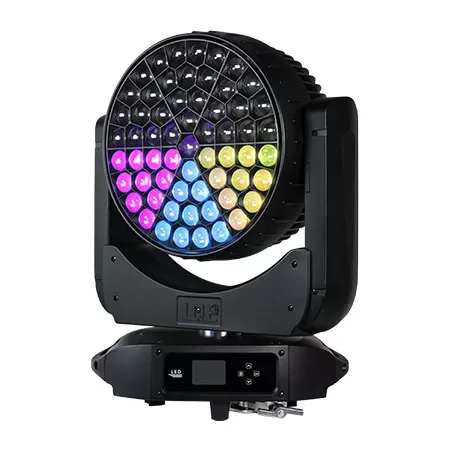
1000w 61x40w RGBW Stage Moving Head Wash Light LW1000
1000W 61x40W LED RGBW Mulichips Moving Head Wash Lights with Zoom (5°–50°), Covering Large Range and Long Distance. Designed to deliver a 5°–50° ultra-large zoom range to achieve a greater wash effect, illuminating stages and events with stunning lighting effects.
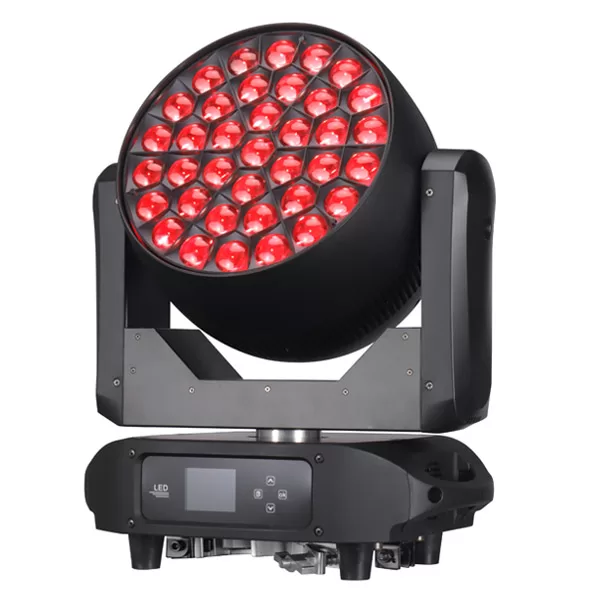
800w 37x40w RGBW Stage Moving Head Wash Light LW800
800W 37x40W LED RGBW Mulichips Moving Head Wash Lights with Zoom (5°-50°), Covering Large Range and Long Distance. Designed to deliver a 5°–50° ultra-large zoom range to achieve a greater wash effect, illuminating stages and events with stunning ring control lighting effects.

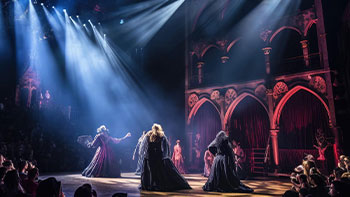
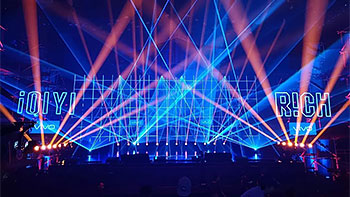

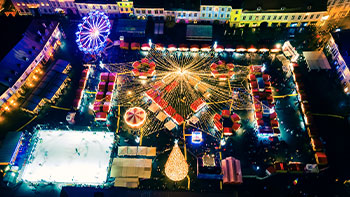








Linkedin
YouTube
Whatsapp: +8618924548390
TikTok